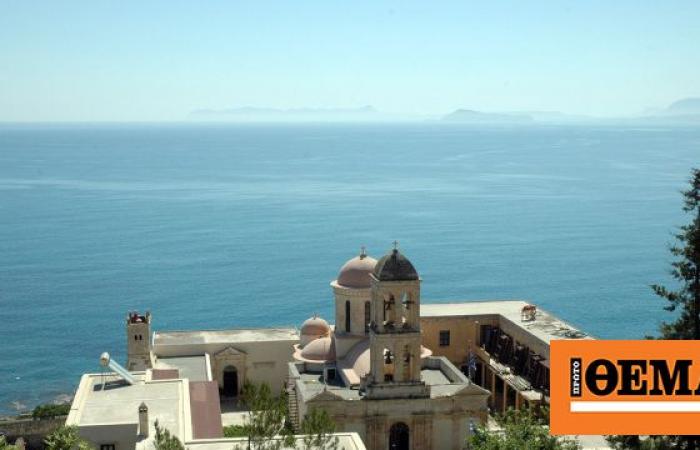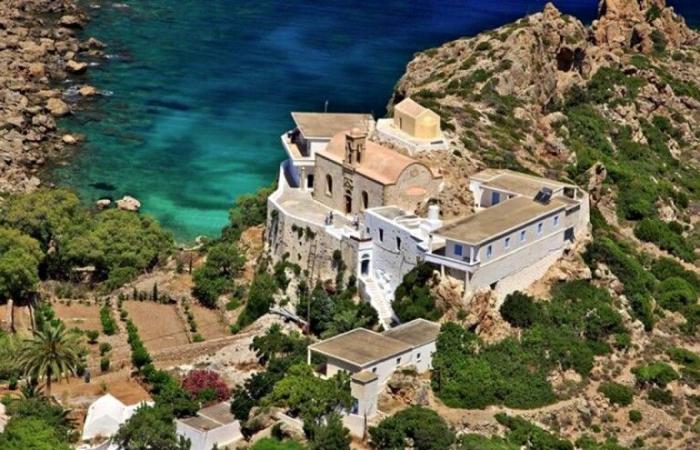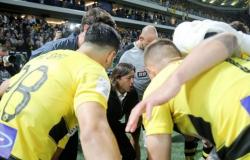On the “Easter of the summer”, as the fifteenth of August is called, thousands of believers, with reverence and divine devotion, flock to holy churches and monasteries to worship the holy icon of the Virgin Mary.
In the area of Chania, among the most important reference points of the day are the Monastery of Odigetria Gonia Kolymvari and the Monastery of Chrysoskalitissa, which traditionally gather a large number of believers from all over Crete.
This year and after more than two years of the pandemic these points are expected to be meeting places for thousands of believers, as both Monasteries are inextricably linked with the history of the place and the struggles of the Cretans from the time of the Turkish occupation until the occupation of Crete by the Germans.
The Moni Gonias in Kolymbari
In the Monastery of Gonia many believers like to go on foot to worship the icon of the Virgin Mary covering distances even from the city of Chania.
The Monastery was founded in the 9th century AD in the location Menies of Akrotiri, in the place where the sanctuary of Diktynna was located, and was dedicated to Saint George. Due to attacks by pirates, the monastery in the 13th century was moved further south, and a small monastery was built where the cemetery of the Monastery is today.
It was founded in its current location in 1618 by the monk Vlasios, from Amasia, Cyprus. The work of reconstruction was continued by Benediktos Tzagarolas, while the large donation of Georgios Murmouris helped in the reconstruction and maintenance of the monastery. The church of the monastery was completed in 1634, according to an inscription on the western part of the dome.
In 1652, the Turks destroyed the Monastery to function afterwards as a Monastery-school after works. During the revolution of 1821, the monastery functioned as a hospital, while in 1867, during the revolution of 1866, the monastery was again destroyed by the Turks.
In 1899, the current bell tower of the Monastery was built, which was declared a monument in 1935. During the Second World War, after the occupation of Athens by the Germans, part of the Evelpidon school functioned in the monastery. After the Battle of Crete, the Germans commandeered the Monastery and imprisoned the monks. The monastery partially reopened in 1942 and until 1944 it was a German camp.
In the 1960s, on land granted by the Monastery, the Orthodox Academy of Crete was built, which to this day is one of the most important institutions of Orthodoxy, having also hosted the Holy and Great Synod in June 2016.
Chrysoskalitissa Monastery
The Monastery of Chrysoskalitissa, is located 76 kilometers from Chania at the southwestern end of the Regional Unity, built on a high rock, which invites the faithful to ascend for the candle of faith and prayer. Tradition has it that its last step was once gold and hence its name.
The central church of the Monastery is two-aisled with its aisles dedicated to the Dormition of the Virgin and the Holy Trinity and was built in 1894 to replace the original small cave church. The monastic complex was completed by building vaulted spaces on the surface of the rock, while under the rock are the “Parthenon” buildings, where the nuns were housed. Today, the miraculous icon of the Dormition of the Virgin dating back to the second half of the 17th century is preserved in the catholicon, while a small museum has also been set up.
THE view is impressive as when the visitor arrives at the Monastery, he faces the endless blue of the Libyan Sea.
On August 15, the Gouvernetou Monastery in Akrotiri Chania, the Metropolitan Church of the Entry of the Virgin Mary in the old town of Chania, among others, are still “celebrating”as well as 14 holy temples inland.
News today:
Ex-reality player’s case file storms Court of Appeal – Money and drug trails sought
Great Britain: Anger over Johnson’s… Greek summer – “He’s on holiday, while the country is plagued by punctuality”
Warning, harsh images: Car in Chicago “gassed” and killed three people







